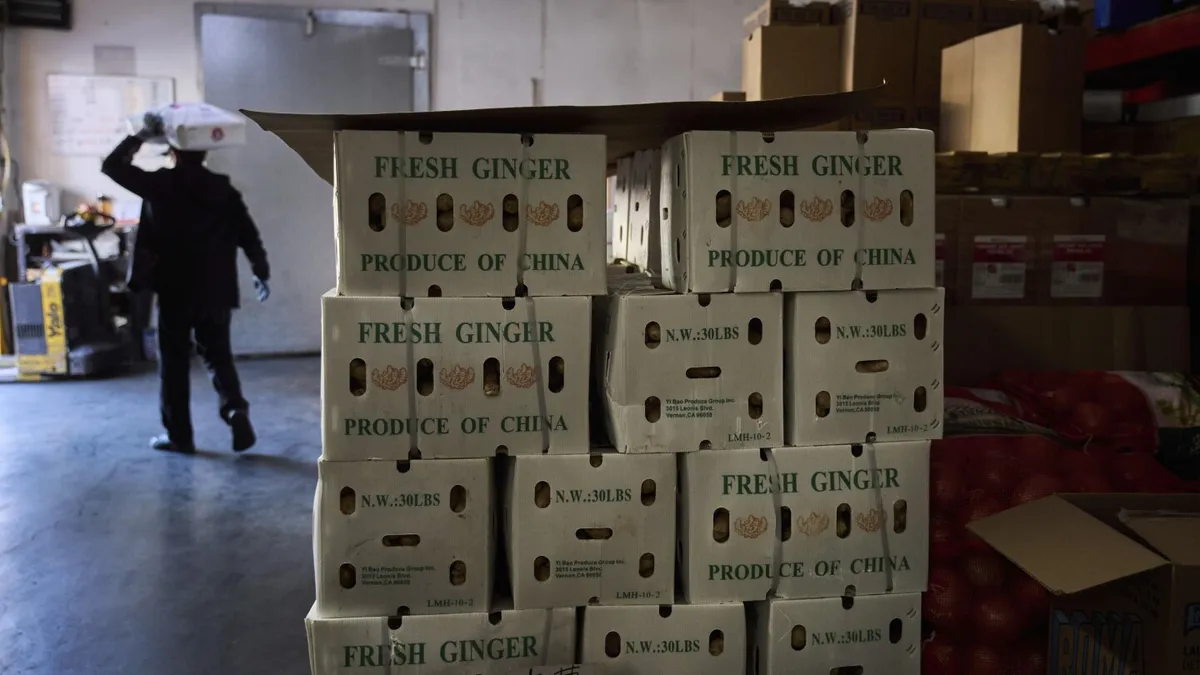
When the first two rounds of 10% tariffs were imposed, Zou Guoqing, a seasoned exporter from Ningbo, China, expressed his frustration but remained hopeful. To maintain his business relationship with a snow-bike factory in Nebraska, he reluctantly reduced his profits, offering price cuts between 5% and 10%. This strategy appeared successful as the factory placed a new order for molds and parts.
However, the landscape shifted drastically when President Donald Trump announced an additional 34% universal tariff on Chinese goods on April 2. Zou was taken aback, stating, “There’s not a thread of feasibility.” After over a decade of trading with the U.S., he found himself contemplating a complete withdrawal from the market. Following that announcement, tariffs skyrocketed to a staggering 145%, forcing Zou to pause shipments until diplomatic discussions could offer a glimmer of hope. “We are pausing the shipments,” he noted, highlighting the uncertainty that has gripped the trade relationship between the U.S. and China.
The escalation of tariffs—145% from the U.S. and a retaliatory 125% from China—is causing significant anxiety among businesses engaged in trade between these two economic giants. Companies are not only worried about fulfilling upcoming orders but also about their long-term survival in the face of such punitive measures. Experts warn that prolonged high tariffs could lead to a severe decoupling of the American and Chinese economies, a concern echoed by Chen Zhiwu, a finance professor at Hong Kong University Business School. He stated, “If the high tariff is sustained for the next six months or longer, that would actually lead to a real effective decoupling.”
Josh Lipsky, senior director at the Atlantic Council’s GeoEconomics Center, emphasized that maintaining these tariffs would effectively create a “trade embargo,” making it exceedingly difficult for China to export low-value goods like apparel to the U.S. Furthermore, U.S. businesses may be compelled to seek alternative sourcing options outside of China, should viable alternatives exist.
In a surprising development, the Trump administration announced an exemption for certain electronics like smartphones and laptops from the reciprocal tariffs, indicating a recognition that these tariffs were not resulting in a significant shift of manufacturing back to the U.S. Meanwhile, the Chinese central tariff office expressed skepticism, declaring there was “no possibility for market acceptance” of U.S. goods under the current tariff conditions.
As Hu Jianlong, founder of Brands Factory, noted, “Everyone’s pretty worried.” Businesses are grappling with uncertainty, awaiting clarity on how the situation will unfold. The current high-stakes tariff war comes over two decades after China joined the World Trade Organization, a move supported by the U.S. that catalyzed China's economic growth through foreign investments and exports to Western markets.
Former President Joe Biden emphasized a strategy of “de-risking” rather than complete decoupling from China, focusing on targeted sectors with national security implications, such as advanced chips and artificial intelligence. However, Trump’s imposition of universal tariffs raises questions about his true intentions and goals for negotiations with China. Greta Peisch, former general counsel for the Office of the U.S. Trade Representative, pointed out the uncertainty surrounding the potential outcomes of these discussions.
China’s leadership has made it clear that they will only engage in talks if the U.S. ceases its “maximum pressure” tactics. Political analyst Li Cheng highlighted the Chinese leadership's frustration with Trump’s selective tariff policies, particularly the temporary suspension of tariffs for other countries. Businesses are left to navigate this complex environment, with many exploring options to minimize the impact of tariffs on their operations.
As businesses adapt to these challenging conditions, they are considering diversifying their markets. Lisa Li, a sales representative for an athletic wear manufacturer, mentioned that her company is negotiating with clients on how to manage increased costs while also exploring sales opportunities in Australia and Europe. Meanwhile, other manufacturers, like Bo from Wenzhou, are less optimistic about alternatives, citing a slump in the European market as a major hurdle.
In Hong Kong, Danny Lau, an aluminum-coating factory owner, reported mixed sentiments from U.S. clients regarding ongoing projects, while some were hesitant to commit to future orders due to the prevailing tariffs. Reports from Shanghai indicated a drastic reduction in shipping activity to the U.S., as major shipping lines cut back on trans-Pacific routes in response to the new tariffs.
Looking ahead, the tariff war is likely to encourage Chinese businesses to diversify their supply chains and even consider relocating some manufacturing operations outside of China. However, Zou, the exporter from Ningbo, remains hopeful about the future, describing the U.S. market as “reliable and without finicky demands.” He awaits a resolution, believing that there may be a “rainbow after the storm.”
As the situation continues to evolve, businesses on both sides of the Pacific are left to navigate the uncertain waters of international trade amid high tariffs and strained relations.